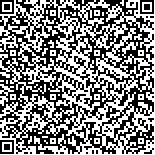| 摘要: |
| 目的 随着化学肥料在全球范围的大量使用,所引起的农业面源污染问题不仅对整个生态系统造成的破坏难以估量,还直接影响了农民的切身利益。化肥减施增效技术是目前协调农业生产与环境保护的重要途径,但先进技术与生产应用之间存在不同程度上的脱节现象,这就需要将技术进一步物化,开展对技术“载体”的研究。方法 农业经营主体是肥料施用最直接的载体,农户施肥行为的规范程度直接关系肥料利用的效率及对环境的污染程度,文章以采用化肥减施技术的水稻种植农户为研究对象、从技术增效角度入手、运用MOA理论构建分析框架,借助结构方程模型和mplus7.0软件、对角加权矩阵伴均值-方差校正卡方检验(WLSMV)方法对样本农户技术采纳行为的决策过程进行实证分析。结果 (1)采纳机会、采纳动机、抗风险能力都对农户采纳技术的行为规范在1%的显著性水平上具有正向影响;(2)技术认知对其行为规范的路径系数为负,假设未通过验证;(3)行为规范对行为效益的路径系数高达0.97,行为效益对采纳意愿的系数为0.9。结论 影响农民行为的主客观因素中采纳动机是最显著的,行为执行的规范程度是决定其行为效益最直接、最重要的因素,行为效益又是农民是否继续采纳的重要参考,并据此提出相关建议。 |
| 关键词: 技术采纳行为 水稻 化肥减施技术 行为路径 结构方程模型 |
| DOI:10.7621/cjarrp.1005-9121.20220407 |
| 分类号:F323.3 |
| 基金项目:国家重点研发项目“化肥农药减施增效技术效益监测与评估研究”(2016YFD0201306);河南省软科学项目“乡村振兴战略下河南农业生态补偿政策研究——基于政府财政和农户福利的双重约束”(192400410078) |
|
| RESEARCH ON FARMER TECHNOLOGY ADOPTION BEHAVIOR BASED ON MOA THEORY——TAKING RICE FERTILIZER REDUCTION TECHNOLOGY AS AN EXAMPLE |
|
Wei Lili1, Gao Shangbin2, Wu Yiping1, Liu Xianghua1, Xi Bin2
|
|
1.College of Economics and Management, Henan Agricultural University, Zhengzhou 450000, Henan, China;2.Rural Energy &Environment Agency, Ministry of Agriculture and Rural Affairs, Beijing 100125, China
|
| Abstract: |
| With the extensive use of chemical fertilizers in the world, the agricultural non-point source pollution caused by chemical fertilizers not only causes immeasurable damage to the entire ecosystem, but also directly affects the vital interests of the general public, especially farmers.The technology of reducing fertilizer application and increasing efficiency is an important measure and way to effectively regulate the contradiction between the development of agricultural industry and the protection of ecological environment in the world. However, due to the disjointed phenomenon between the research and development of advanced agricultural production technology and the actual production and application of technology, so this requires further materialization of technology and carry out the research on the "carrier" of technology. Agricultural workers, including traditional farmers and new agricultural operators, were the most direct carrier of the technology of reducing fertilizer application and increasing efficiency. The standard degree of fertilization behavior of farmers in agricultural production was directly related to the efficiency of chemical fertilizer utilization and the pollution degree of fertilizer loss and volatilization to the environment. Therefore, this paper took the rice farmers who adopted the technology of reducing and increasing efficiency of chemical fertilizer as the research object, starting from the perspective of increasing efficiency of the technology of reducing fertilizer application and increasing efficiency, and constructed the analysis framework by using MOA theory, with the help of structural equation model and mplus7.0 software, the method of weighted least squares estimator with adjustments for the mean and variance (WLSMV), then empirically analyzed the decision-making process of acceptance behavior.The results showed that adoption opportunity, adoption motivation and anti-risk ability had positive effects on farmers' behavior norms of technology adoption at 1% significance level; the path coefficient of technology cognition to behavior norms was negative, and the hypothesis had not been verified; the path coefficient of behavior norms to behavioral benefits was as high as 0.97, and the coefficient of behavioral benefits to adoption willingness was 0.9. In summary, among the subjective and objective factors affecting farmers' behavior, adoption motivation is the most important influencing factor of farmers' technology adoption behavior decision-making. The standard degree of farmers' behavior in implementing the technology of reducing application and increasing efficiency is the most direct and important factor to determine the behavior benefit, and the behavior benefits are important reference for farmers to continue to adopt the technology, and based on this, the paper puts forward some suggestions to enhance farmers' awareness of adopting the technology of reducing the application of fertilizer. |
| Key words: technology adoption behavior rice fertilizer reduction technical behavior path structural equation model |

